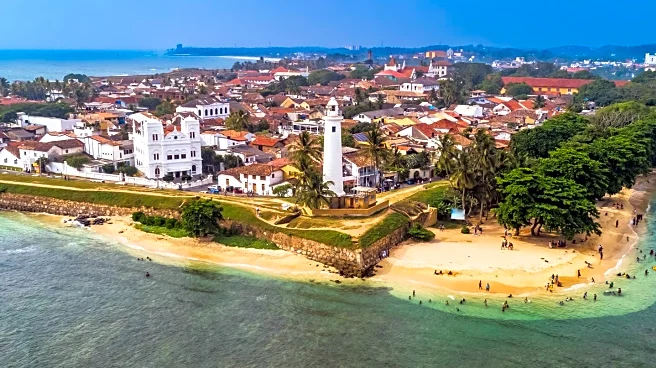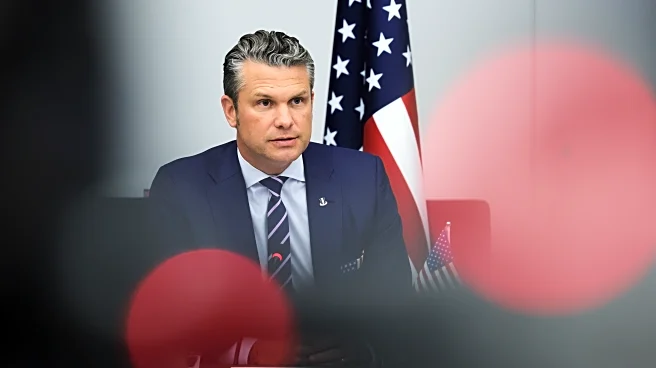What's Happening?
Bilal Ahmady, an 18-year-old from Leicester, faces language challenges during family video calls with relatives in Afghanistan. Although born in the UK and fluent in English, Bilal struggles with Farsi,
the language spoken by his grandparents. His parents often translate for him during these calls. Bilal's father, a refugee from Afghanistan, settled in Leicester nearly 30 years ago. The family maintains connections with relatives across Italy, Russia, Canada, and the US. Ferishta Bakhtari-Boodoo, an author, addresses similar challenges faced by children of Afghan descent in the UK. Her book, 'Our Fruits,' aims to bridge language gaps by teaching simple phrases in English and Dari, the Afghan dialect of Farsi.
Why It's Important?
The language barrier experienced by Bilal and others highlights the broader issue of cultural and linguistic integration for immigrant families in the UK. As children of immigrants often lose touch with their heritage language, they face difficulties in maintaining cultural ties with their extended families. This situation underscores the importance of language preservation as a means of cultural continuity and familial bonding. Efforts like Ferishta's book are crucial in helping younger generations connect with their roots, fostering a sense of identity and belonging. Such initiatives can also promote multicultural understanding and respect within diverse communities.
What's Next?
Efforts to address language barriers among immigrant families may see increased support through educational programs and community initiatives. Language classes and cultural education could become more prevalent, helping children maintain their heritage languages. This could lead to stronger family connections and a deeper appreciation of cultural diversity. Additionally, similar projects to 'Our Fruits' might emerge, targeting other immigrant communities and languages, further promoting cultural integration and understanding.
Beyond the Headlines
The challenges faced by Bilal and others reflect broader societal issues related to immigration and cultural assimilation. As global migration continues, the need for effective integration strategies becomes more pressing. Language plays a critical role in this process, serving as a bridge between generations and cultures. The success of initiatives like Ferishta's book could inspire similar efforts worldwide, contributing to a more inclusive and culturally rich society.












